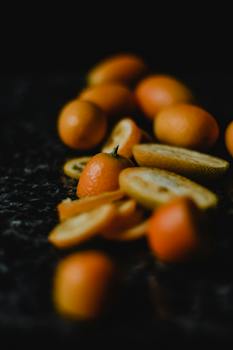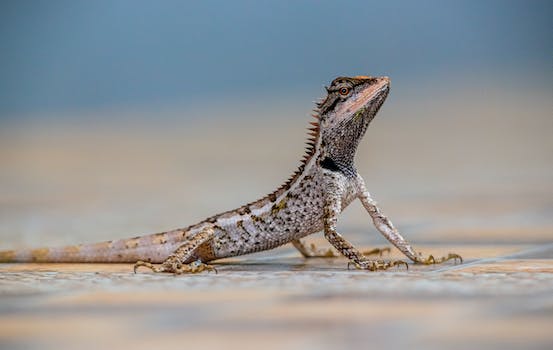

-
Table of Contents
"Beautifully Bewitching, Handle with Care."
Introduction
Dangerous Elegance: Plants to Avoid Touching is a topic that explores the intriguing world of plants that possess both beauty and danger. These plants, often characterized by their captivating appearance, conceal harmful properties that can cause various adverse effects when touched or ingested. This introduction sets the stage for an exploration of some of the most fascinating and potentially hazardous plants found in nature.
Deadly Nightshade: A Closer Look at the Poisonous Plant
Deadly Nightshade: A Closer Look at the Poisonous Plant
Plants have always fascinated humans with their beauty and diversity. From vibrant flowers to lush green leaves, they bring life and color to our surroundings. However, not all plants are as harmless as they appear. Some possess toxic properties that can be dangerous or even deadly if ingested or touched. One such plant is the deadly nightshade, a captivating yet perilous plant that demands our attention.
Scientifically known as Atropa belladonna, deadly nightshade is a perennial herbaceous plant native to Europe, North Africa, and Western Asia. It belongs to the Solanaceae family, which also includes other poisonous plants like henbane and mandrake. Despite its ominous name, deadly nightshade is undeniably elegant, with its bell-shaped purple flowers and glossy black berries. However, its allure masks a potent danger that should not be underestimated.
The toxicity of deadly nightshade lies in its chemical composition. The plant contains tropane alkaloids, including atropine, scopolamine, and hyoscyamine, which are responsible for its poisonous effects. These alkaloids interfere with the normal functioning of the nervous system, leading to a range of symptoms that can be severe or even fatal.
Ingesting any part of the deadly nightshade plant can have dire consequences. The berries, although tempting with their shiny appearance, are highly toxic and can cause symptoms such as dilated pupils, blurred vision, dry mouth, difficulty swallowing, and even hallucinations. Ingesting just a few berries can be lethal, especially for children or pets who may be more susceptible to its effects.
But it's not just the berries that pose a threat. The leaves and stems of the deadly nightshade plant also contain high levels of toxins. Accidental ingestion or even prolonged contact with these parts can lead to symptoms such as dizziness, confusion, rapid heartbeat, and in severe cases, respiratory failure. It is crucial to exercise caution and avoid any direct contact with this plant.
Interestingly, despite its toxicity, deadly nightshade has a long history of medicinal use. In controlled doses, the plant's alkaloids have been used for their antispasmodic, sedative, and pain-relieving properties. However, the narrow therapeutic window and potential for toxicity make it a risky choice for self-medication. It is best left to trained professionals who can carefully administer it in a controlled environment.
In addition to its medicinal use, deadly nightshade has also found its way into folklore and mythology. It has been associated with witchcraft and magic, often depicted as an ingredient in potions or flying ointments. Its reputation as a plant of mystery and danger has made it a subject of fascination for centuries.
In conclusion, deadly nightshade is a captivating yet treacherous plant that demands respect and caution. Its alluring appearance belies its toxic nature, making it a danger to humans and animals alike. The tropane alkaloids it contains can cause a range of symptoms, from dilated pupils to hallucinations, and even respiratory failure. It is essential to educate ourselves about the potential dangers of plants like deadly nightshade and exercise caution when encountering them. While their elegance may be enticing, it is best to admire them from a safe distance and avoid any direct contact.
Beware of the Devil's Breath: Exploring the Dangers of Angel's Trumpet

Angel's Trumpet, scientifically known as Brugmansia, is a captivating plant that exudes an air of elegance with its trumpet-shaped flowers and lush foliage. However, beneath its enchanting appearance lies a hidden danger that should not be underestimated. This article aims to shed light on the potential hazards associated with Angel's Trumpet and the precautions one should take when encountering this alluring yet perilous plant.
Native to South America, Angel's Trumpet has gained popularity worldwide due to its stunning flowers and intoxicating fragrance. Its large, pendulous blooms come in various colors, including white, yellow, pink, and orange, making it a sought-after addition to gardens and landscapes. However, it is crucial to exercise caution when handling or even being in close proximity to this plant.
One of the most significant dangers of Angel's Trumpet lies in its toxic properties. All parts of the plant contain tropane alkaloids, such as scopolamine, hyoscyamine, and atropine, which can have severe effects on the human body. Ingesting any part of the plant, whether accidentally or intentionally, can lead to symptoms ranging from mild to life-threatening.
The effects of Angel's Trumpet poisoning can manifest in various ways, depending on the amount ingested and the individual's sensitivity. Common symptoms include dilated pupils, blurred vision, dry mouth, rapid heartbeat, confusion, hallucinations, and even seizures. In severe cases, it can cause respiratory distress, coma, and death. It is crucial to seek immediate medical attention if any signs of poisoning occur.
It is not only ingestion that poses a risk; mere contact with the plant can also lead to adverse effects. The sap of Angel's Trumpet contains the same toxic alkaloids found in its leaves and flowers. Touching the plant and then touching one's face or eyes can result in absorption through the skin or mucous membranes, leading to symptoms similar to those of ingestion.
Due to its toxic nature, it is essential to take precautions when handling Angel's Trumpet. Wearing gloves and protective clothing is highly recommended to prevent direct contact with the plant's sap. Additionally, it is advisable to wash hands thoroughly after any interaction with the plant to minimize the risk of accidental ingestion.
Another aspect to consider is the potential danger Angel's Trumpet poses to pets and children. Curiosity often leads them to explore their surroundings, and the attractive appearance of this plant may entice them to touch or taste it. It is crucial to keep Angel's Trumpet out of reach of children and pets, and to educate them about the potential dangers associated with it.
In conclusion, while Angel's Trumpet may possess an alluring beauty, it is crucial to approach this plant with caution. Its toxic properties can have severe consequences for both humans and animals. Understanding the potential hazards and taking necessary precautions, such as wearing protective clothing and keeping it out of reach, can help ensure the safety of all who encounter this dangerous yet elegant plant.
The Alluring yet Hazardous Beauty of Poison Ivy
Poison ivy, with its alluring yet hazardous beauty, is a plant that should be avoided at all costs. Found in various parts of North America, this plant is notorious for causing a painful, itchy rash upon contact. Its leaves, which are arranged in groups of three, are shiny and green during the summer, turning a vibrant red or orange in the fall. While it may be tempting to admire its vibrant colors, it is crucial to remember that this plant is not to be touched.
The danger lies in the oil called urushiol, which is present in all parts of the poison ivy plant. Even the slightest brush against the leaves, stems, or roots can cause the oil to come into contact with the skin, leading to an allergic reaction. It is estimated that about 85% of people are allergic to urushiol, making poison ivy a common and widespread problem.
The symptoms of a poison ivy rash can vary from person to person, but they typically include redness, swelling, and intense itching. Blisters may also develop, which can be extremely uncomfortable and may take weeks to heal. In severe cases, the rash can spread to other parts of the body if the oil is not washed off immediately. It is important to note that the rash is not contagious and cannot be spread from person to person.
Preventing contact with poison ivy is the best way to avoid the painful consequences. Learning to identify the plant is crucial, as it can often be found in wooded areas, along hiking trails, and even in suburban backyards. Remembering the old saying, "Leaves of three, let it be," can be a helpful reminder to steer clear of this dangerous plant.
If you do come into contact with poison ivy, it is essential to take immediate action. The first step is to wash the affected area with soap and water as soon as possible. This will help to remove the urushiol oil from the skin and reduce the risk of a severe reaction. It is also important to wash any clothing or tools that may have come into contact with the plant, as the oil can remain active for months.
For those who are particularly sensitive to poison ivy, there are several over-the-counter creams and lotions available that can help to relieve the itching and discomfort. These products typically contain ingredients such as calamine or hydrocortisone, which can provide temporary relief. However, it is always best to consult with a healthcare professional if the rash is severe or does not improve within a few days.
In conclusion, while poison ivy may possess an alluring beauty, it is a plant that should be avoided at all costs. The urushiol oil present in all parts of the plant can cause a painful, itchy rash that can last for weeks. Learning to identify and steer clear of poison ivy is crucial for anyone spending time outdoors. If contact does occur, immediate action should be taken to wash the affected area and prevent further spread of the oil. By being aware of the dangers of poison ivy, we can ensure that our encounters with nature remain enjoyable and itch-free.
Q&A
1. What are some examples of plants that should be avoided touching due to their dangerous nature?
Some examples of plants to avoid touching include poison ivy, stinging nettle, and giant hogweed.
2. Why should these plants be avoided?
These plants can cause skin irritation, rashes, and in some cases, severe allergic reactions or burns upon contact.
3. How can one identify these dangerous plants?
These plants can be identified by their distinct characteristics. For example, poison ivy has three leaflets, stinging nettle has fine hairs that cause a stinging sensation, and giant hogweed has large, umbrella-like flower clusters and can cause severe burns when touched.
Conclusion
In conclusion, Dangerous Elegance: Plants to Avoid Touching highlights the beauty and allure of certain plants while emphasizing the importance of being cautious around them. The book provides valuable information about various poisonous plants, their characteristics, and potential risks associated with touching or ingesting them. By raising awareness about these plants, the book serves as a helpful guide for individuals to avoid potential harm and ensure their safety when encountering such flora.












